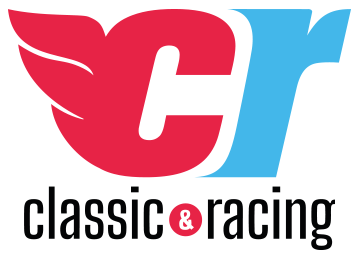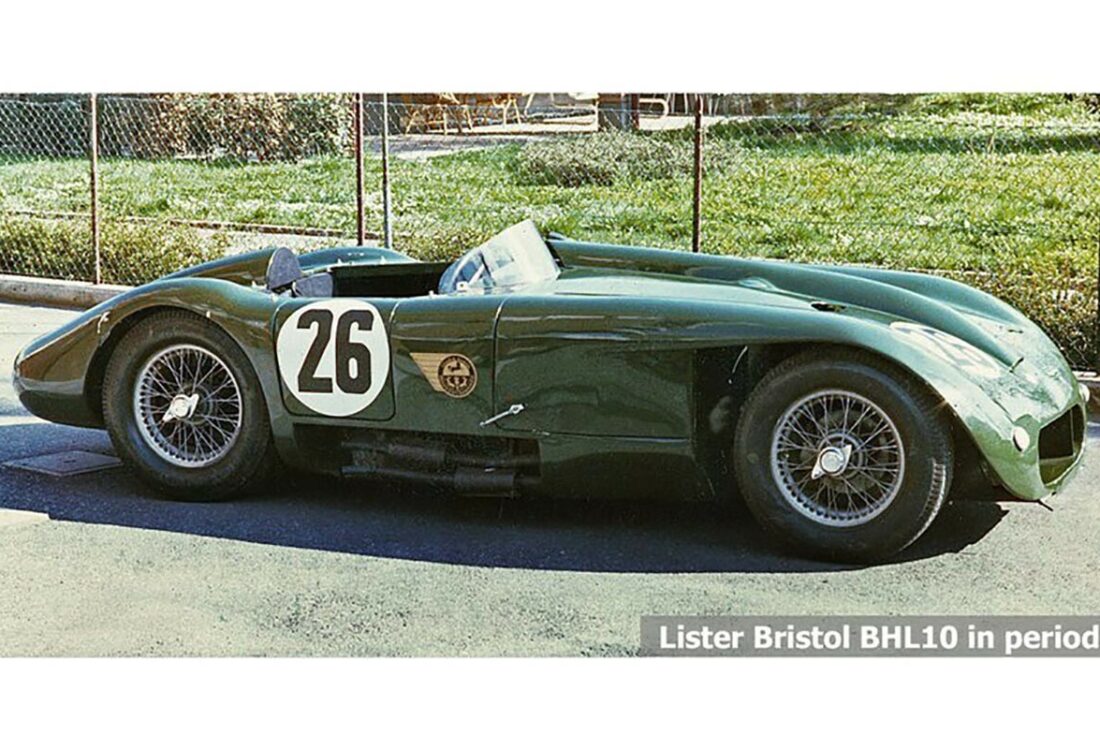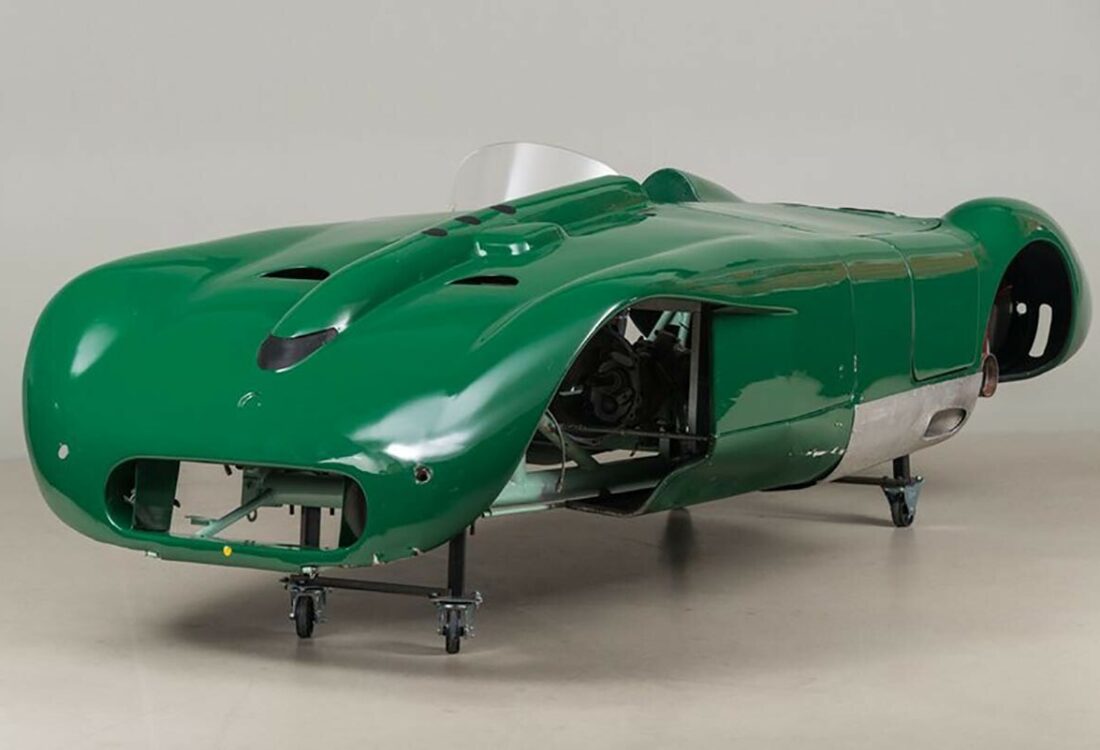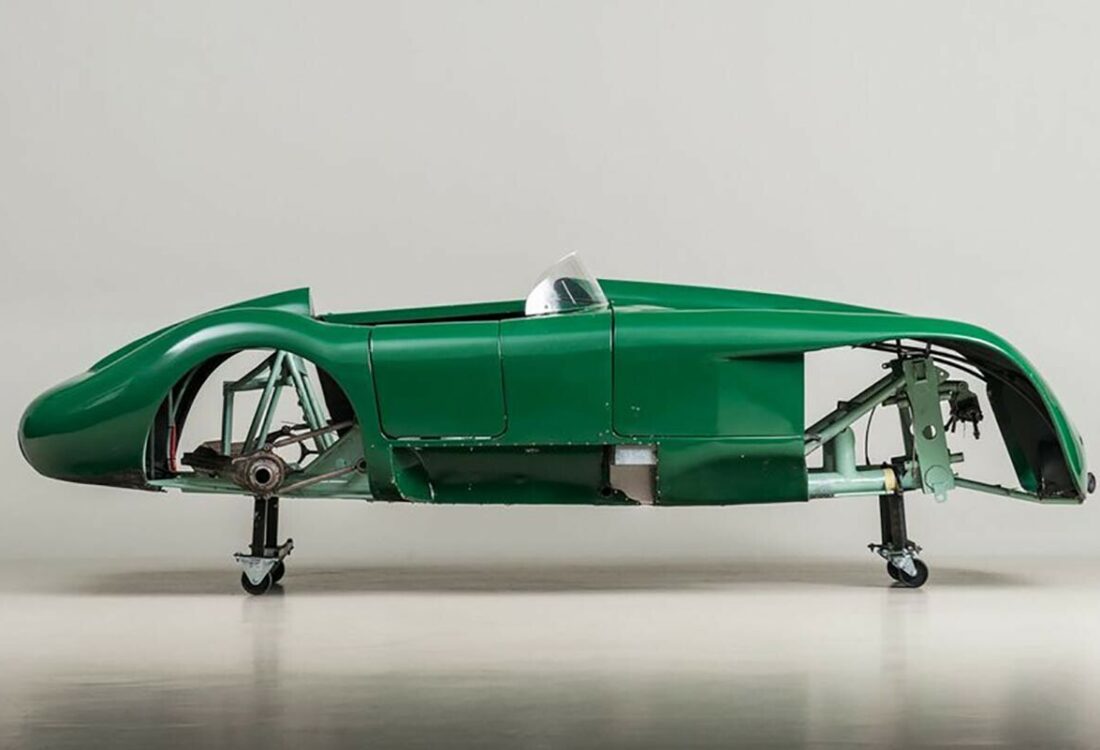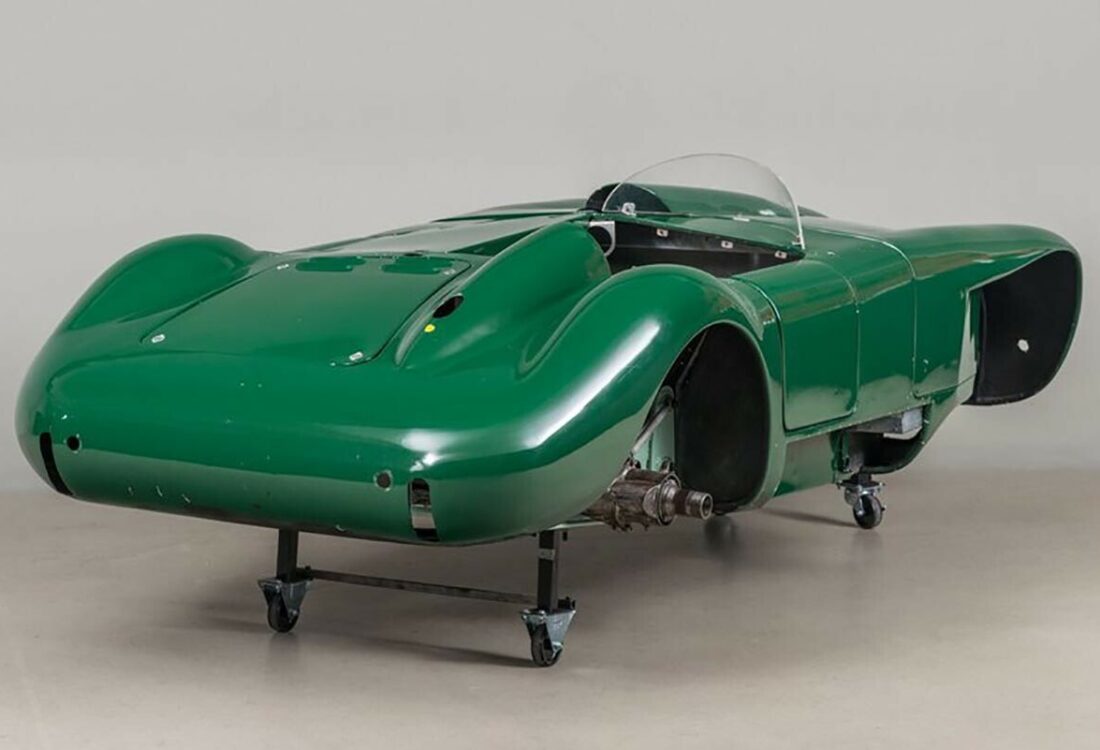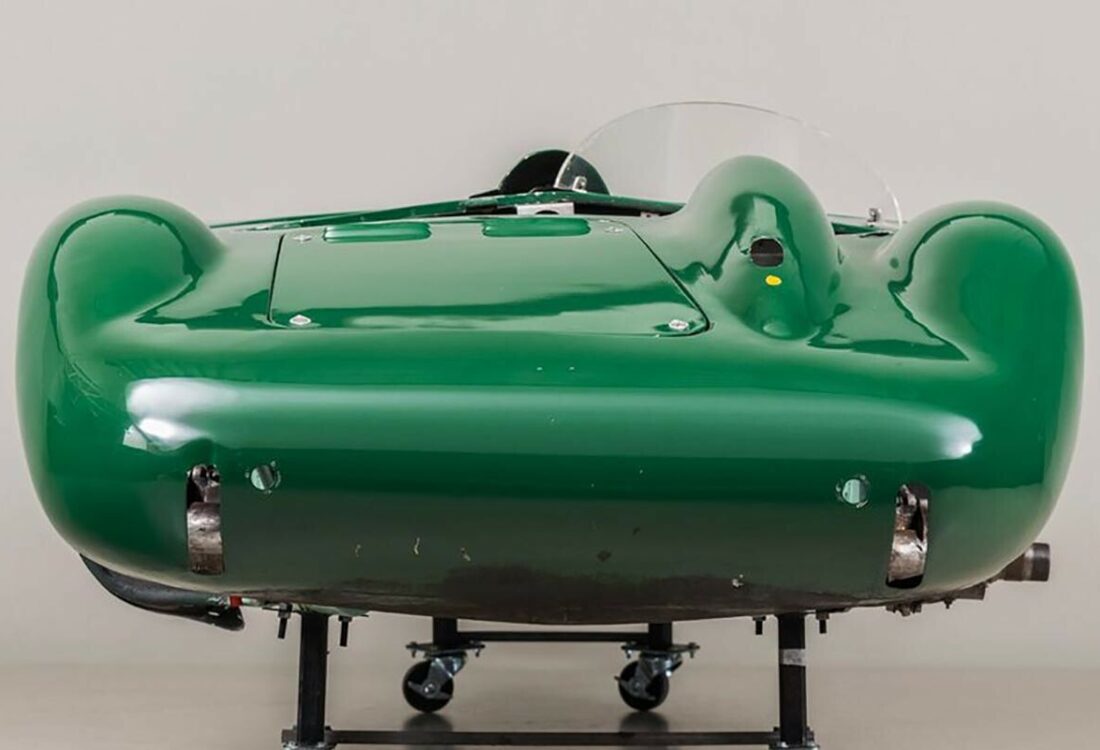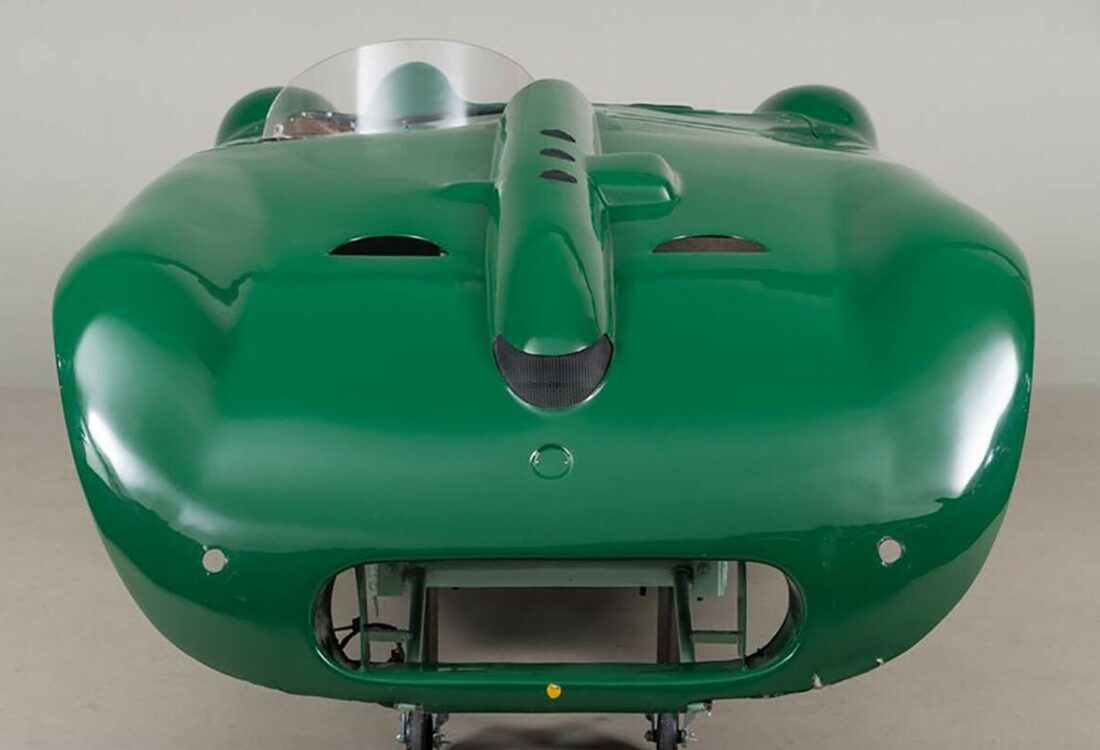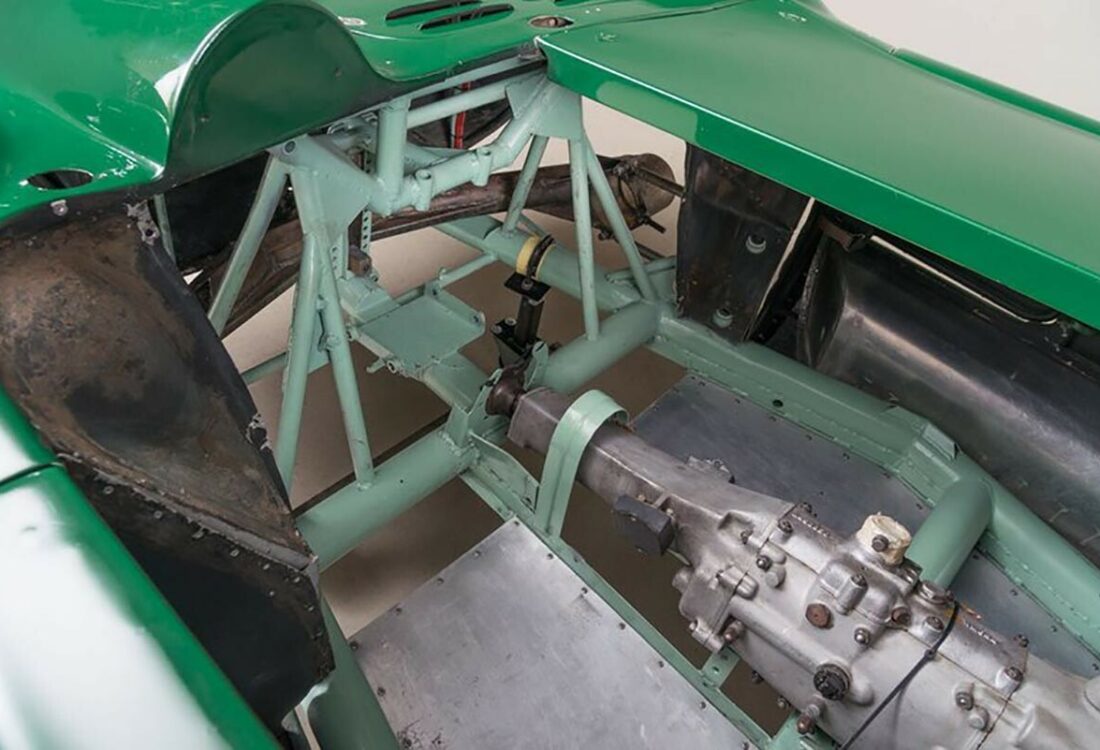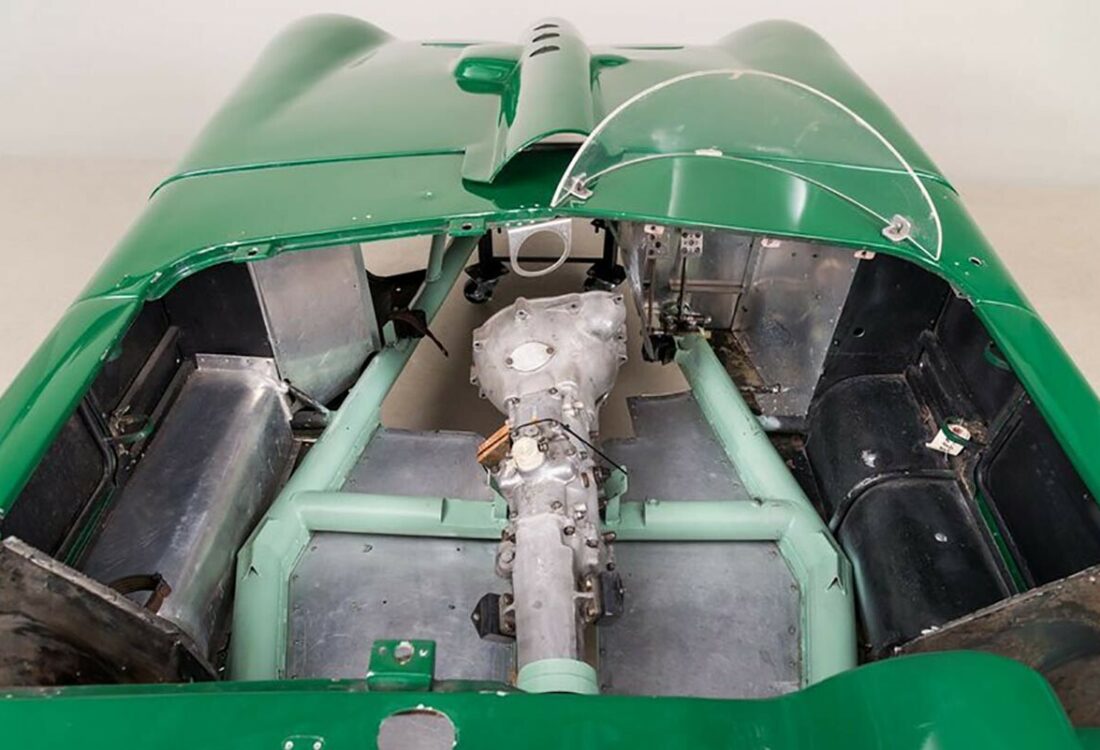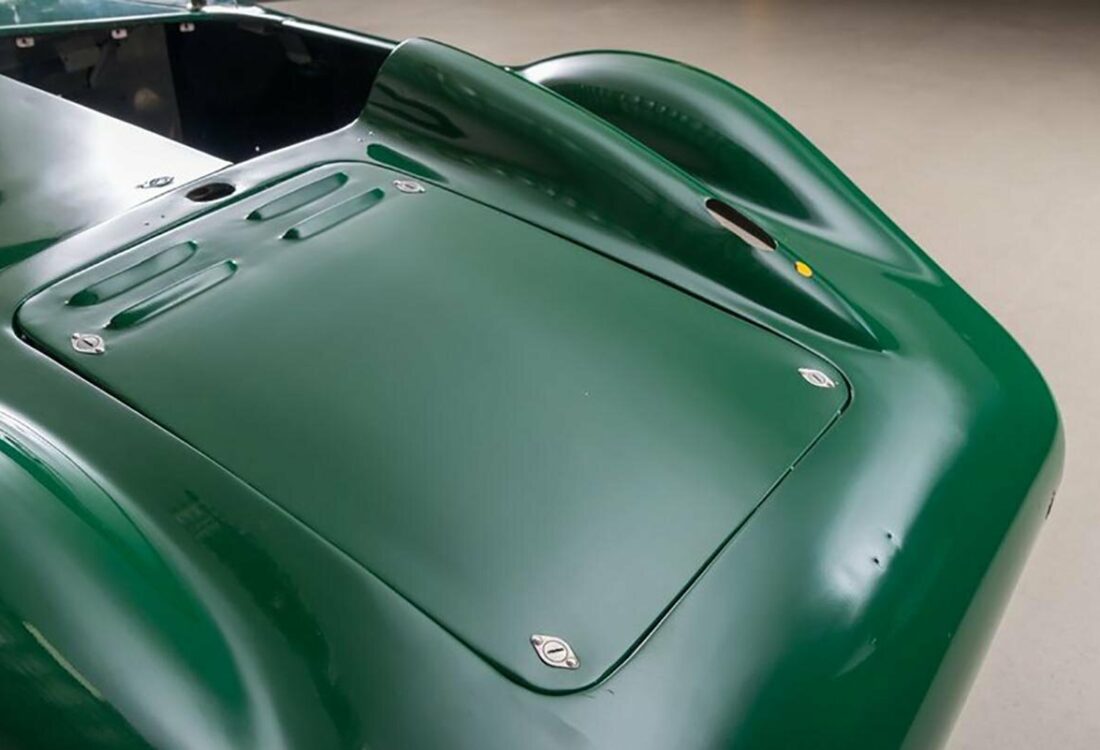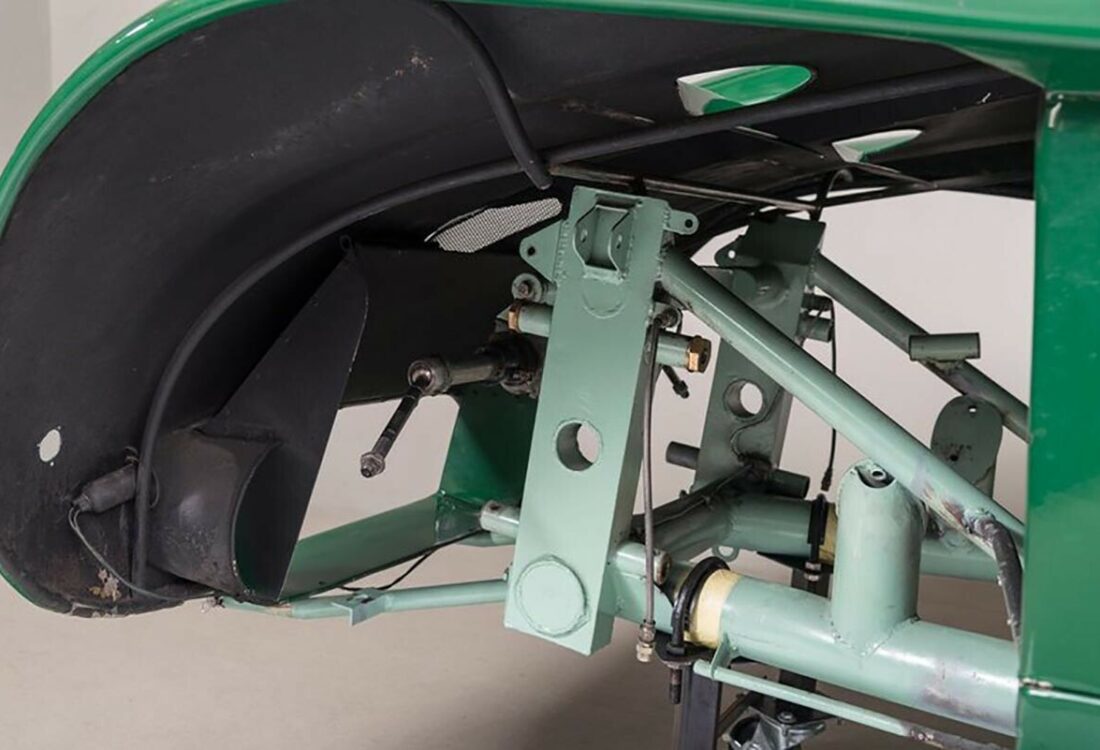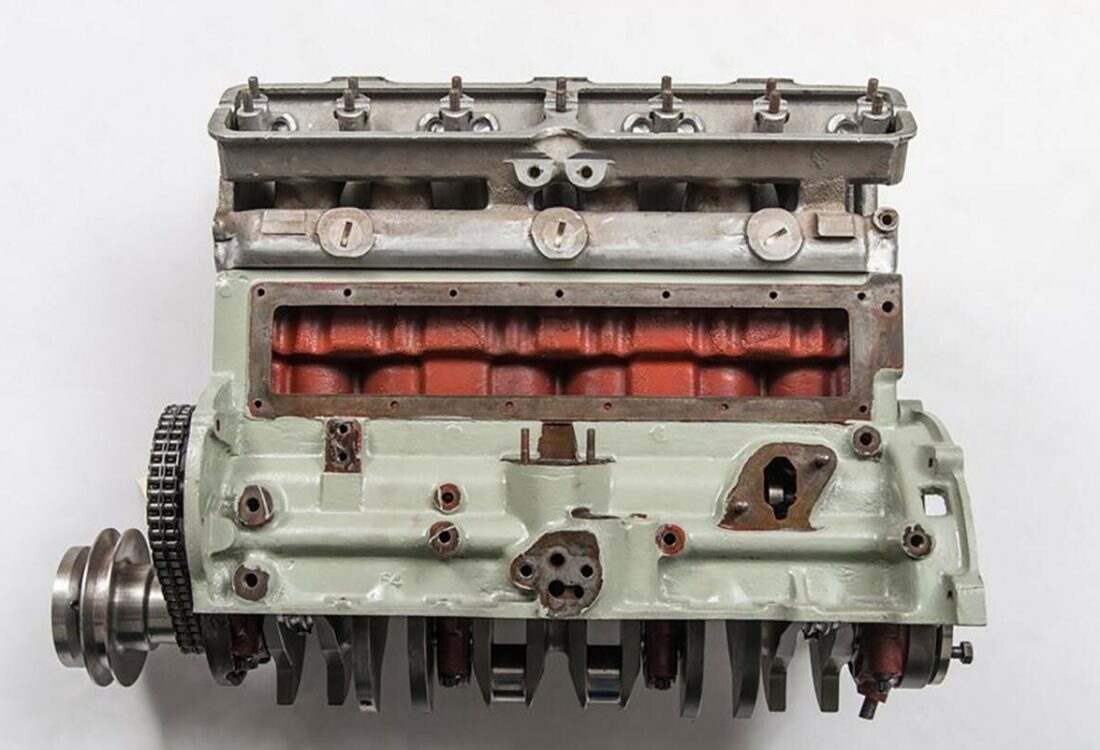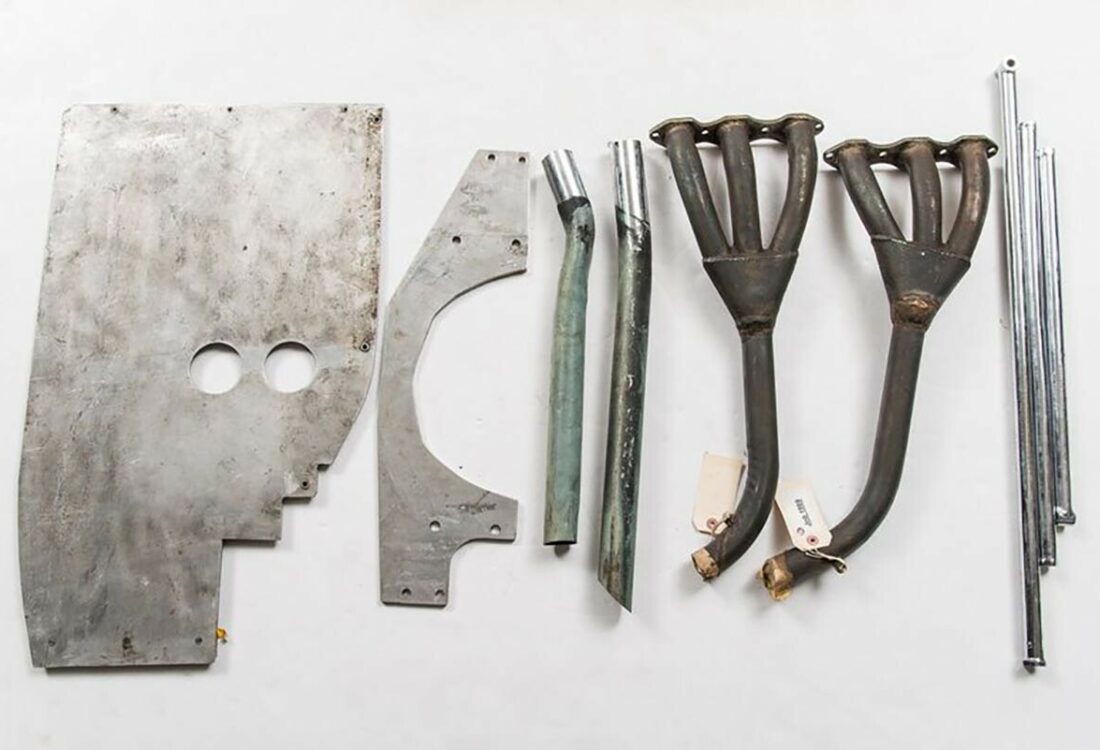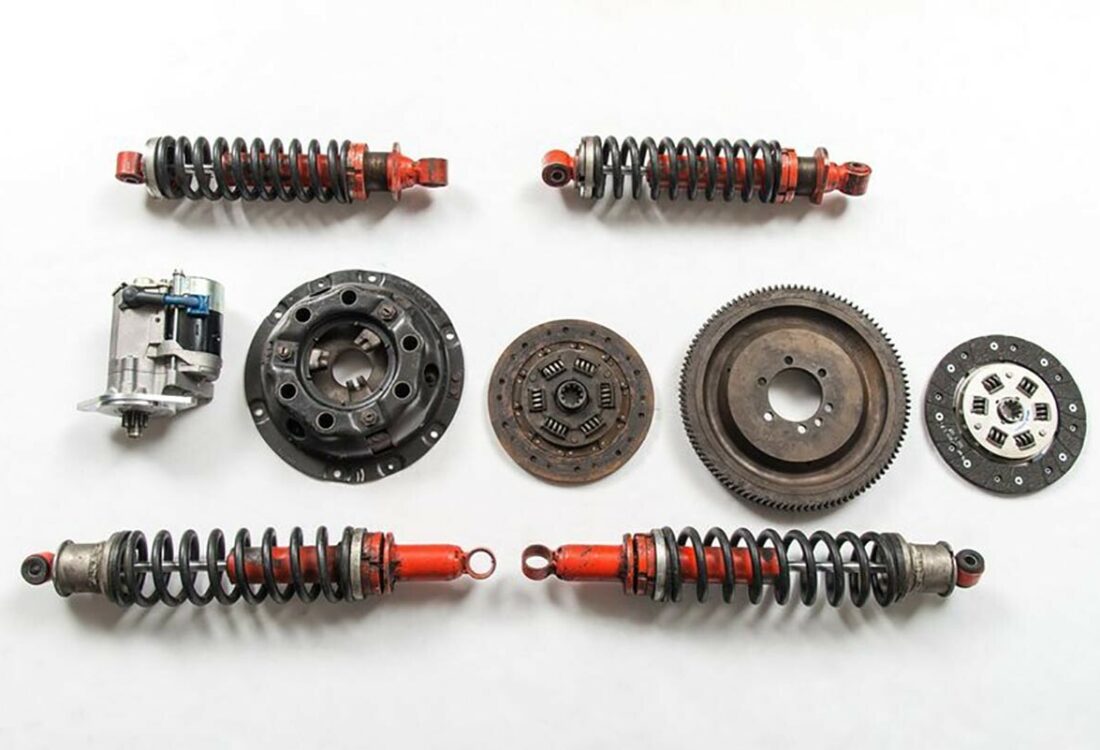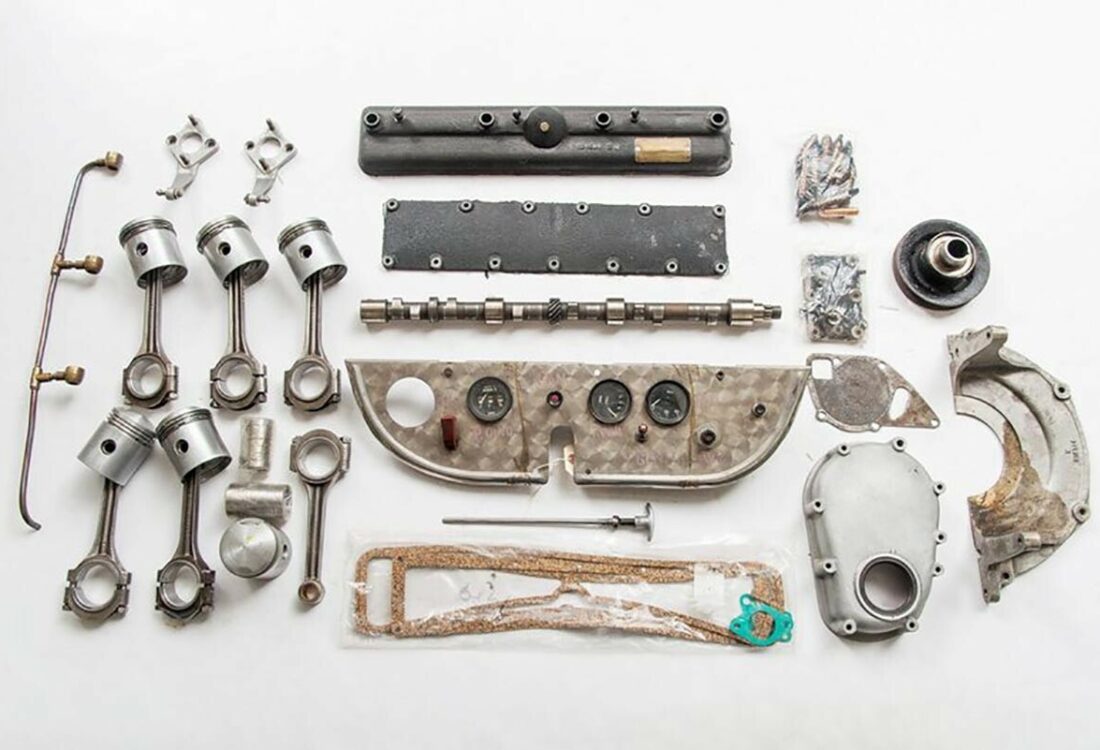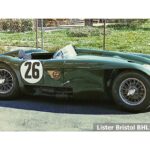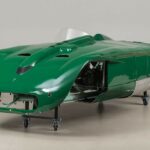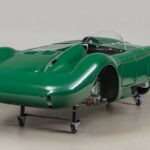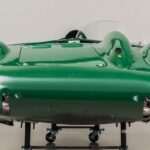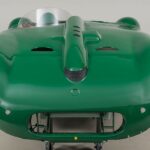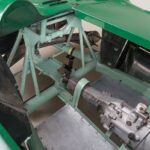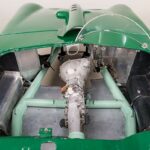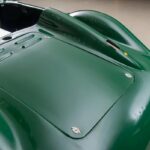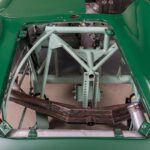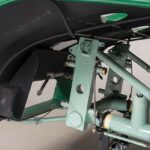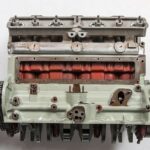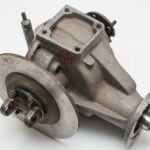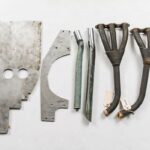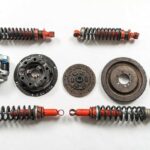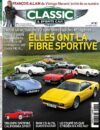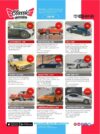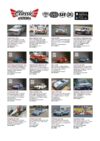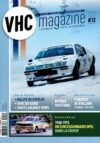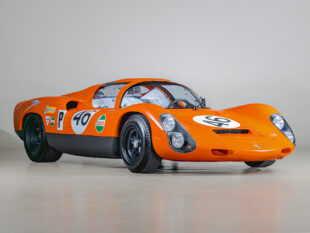
LISTER BRISTOL
Les services + de Classic Racing
Bientôt disponible

Bientôt disponible
A votre service depuis 1995, Transfret c’est avant tout le respect des collaborateurs et des clients.
Pour transporter de 1 à 6 voitures partout en Europe, contactez nous sur www.groupe-transfret.com
Voici l’un des onze exemplaires construits, faisant partie des débuts de la fabrication de voitures de course par Lister, il a été vérifié par le spécialiste Chris Keith-Lucas de CLK Developments Ltd et est doté d’une carrosserie en aluminium Wakefield unique. C’est un cas rare par rapport aux Lister-Jaguars plus courants. Il est livré avec de nombreuses pièces d’époque pour le projet. Peu de voitures de course d’après-guerre sont aussi largement reconnues que la silhouette gracieuse des Listers de la fin des années 50. Connue pour ses moteurs puissants, ses formes de carrosserie élégantes et pour sa capacité à gagner, la large gamme de voitures Lister a laissé un impact sur la communauté du sport automobile et a aidé à définir le design des voitures dans les années 1950. Comme tous les constructeurs de voitures de course, ils ne sont pas apparus du jour au lendemain et l’histoire entourant les premières Listers est une fascinante et un témoignage de l’ingéniosité de leur concepteur, Brian Lister.
Passionné par les courses, Brian a fait l’expérience d’un certain nombre de voitures de compétition, mais il est toujours resté avec un sentiment d’insatisfaction. Cela a déclenché son aventure pour établir Brian Lister Cambridge Ltd., peu de temps après avoir négocié un petit prêt de 1 500 livres auprès de son père. La seule condition était que si rien de valable n’était créé dans les 6 mois, Brian abandonnerait le projet. Sans se laisser décourager, Brian a conçu et fabriqué des composants pour la première Lister et après quelques mois de construction, la première voiture a été révélée. La Lister-MG (utilisant un moteur MG) était la première voiture de course Lister de Brian. Ne pouvant pas se permettre le moteur Bristol plus puissant dans un premier temps, le premier Lister était propulsé par un MG 1 466 cm3, se révélant insuffisant et rendant ainsi la voiture non compétitive. Après quelques courses, il était évident que la Lister-MG ne pourrait gagner aucune épreuve sans une meilleure motorisation. Après de longues délibérations (et d’importantes sommes d’argent réunies), Brian a pu acheter le moteur Bristol qu’il voulait depuis le début.
Avec l’installation de ce moteur, Brian a conçu et supervisé la construction du châssis, Don Moore a réglé les moteurs et Archie Scott Brown au volant. Ce nouvel organe a complètement changé le statut de la Lister, passant d’une voiture de course peu compétitive à une gagnante presque imbattable. Elle a commencé à courir au milieu de la saison 1954 et a fait une bonne entrée lors de la rencontre télévisée du GP britannique Silverstone du 17 juillet. Non seulement la Lister-Bristol a remporté la première place de la catégorie des 2,0 litres, mais elle a terminé 5e au classement général dans la catégorie illimitée, avec seulement des Jaguars et Aston Martins de type C plus puissantes devant eux. La saison 1954 a vu le succès de Lister-Bristol dans plusieurs épreuves dont Snetterton, Brands Hatch, Castle Combe, Silverstone, Crystal Palace et Goodwood. Entre le compétent Archie Scott Brown et le tout aussi efficace Lister, la voiture de course devint rapidement une machine extrêmement puissante.
1955 fut l’année de Lister-Bristol pour Brian et son équipe. Les premiers succès de la voiture lors de la seconde moitié 1954 n’ont pas été un hasard, car la voiture de course et Scott Brown ont remporté pas moins de 13 drapeaux à damier au cours de la saison 55. Ils ont même remporté le British Empire Trophy à Oulton Park, battant une Aston Martin DB3S, HWM-Jaguar et une horde de type D. 1955 a également été la première année de construction de voitures Lister-Bristol pour des clients, procurant un bénéfice modeste mais apprécié qui a permis à Brian et à son équipe de continuer à courir. Ces voitures supplémentaires sur la piste ont surtout établi Lister comme une marque plutôt que comme un constructeur de promotions uniques. La Lister-Bristol cesserait d’être construite après 1955 alors que le développement d’améliorations continuait. Cependant, les Bristols furent encore utilisées par de nombreux clients de Brian et furent des concurrents sérieux pour les années à venir.
Cette Lister-Bristol de 1955, BHL10, est l’un des onze Lister-Bristols jamais construits. En 2011, la Lister a été vérifiée par le spécialiste des voitures de course Chris Keith-Lucas de CLK Developments Ltd. après consultation de David Vine, John Harper, David Ham, Colin Crisp, Doug Nye et Guy Broad. Dans son rapport, il souligne de nombreux aspects clés de la voiture qui illustrent son authenticité, y compris la disposition «Kite» du châssis. Un certain nombre d’indicateurs comprenaient des points de soudure d’origine, des points de montage et les nombreuses pièces d’origine Lister Bristol furent inspectée. Selon le rapport de Chris Keith-Lucas, les preuves indiquent qu’il s’agit d’un châssis d’origine.
Les Lister-Bristols sont beaucoup plus rares que les Lister-Jaguars, en raison de leurs débuts avec Brian Lister et leur situation de début de la croissance de leur fabricant. Il s’agit d’une occasion unique de posséder un châssis et un train roulant Lister-Bristol authentiques, ainsi qu’un moteur et une boîte de vitesses de spécifications d’époque, ainsi qu’une carrosserie en aluminium formée à la main il y a presque 40 ans. La Lister est livrée avec un grand nombre de pièces incluses dans l’achat, y compris le moteur et la transmission Bristol. Avec une opportunité unique de posséder et de restaurer ce premier Lister-Bristol dans sa configuration d’origine, c’est un morceau très spécial de l’histoire de la marque.
Historique de propriété
– Vendue par John Harper à David Vine en avril 1976
– Mise en vente pour 5000 £ dans le numéro d’août 1977 de Motor Sport
– 27.10.77 – vendue par Christies pour £ 4800 – achetée par Bruno Nicolini
– 21/01/1980 – Importée en Italie avec moteur Bristol – Participation au Championnat d’Europe historique à Monza dans la course FIA Trophy pour les prototypes sportifs et monoplaces de plus de 1450 cm3.
– 30/10/89 – Vendue en tant que Lister Jaguar à Flavio Tullio
– 8/1/91 – enregistrée auprès de la FIA en tant que Lister Jaguar avec un moteur Jaguar de 3800 cm3 et une carrosserie Lister Knobbly
– Oct 2012 – acquise par Bruce Canepa auprès de Flavio Tullio
![]() For sale Lister Bristol 1955.
For sale Lister Bristol 1955.
This is one of the eleven units even built, a part of the early production race cars built by Lister, it has been verified by specialist Chris Keith-Lucas of CLK Developments Ltd and gets a unique Wakefield aluminum bod. That’s a rare example compared to more common Lister-Jaguars. It comes with a large collection of period-correct parts for project. Few post-war race cars are as widely recognized as the graceful bodywork of late 50s Listers. Known for their powerful engines, elegant body shapes, and for their ability to win, the wide range of Lister cars left an impact on the motorsport community and helped define the design of cars in the 1950s. Like all race car builders, they didn’t appear overnight and the story surrounding early Listers is a fascinating story and a testament to their designer’s ingenuity, Brian Lister.
Enthusiastic about racing, Brian experienced a number of race cars during competition but was always left with an unsatisfied feeling. This sparked his journey to establish Brian Lister Cambridge Ltd., shortly after negotiating a small loan of 1,500 pounds from his father. The only stipulation was that if nothing of merit was created within 6 months that Brian abandon the project. Undeterred, Brian designed and fabricated components for the first Lister and after a few months of building, the first car was revealed. The Lister-MG (using an MG powerplant) was Brian’s first Lister race car. Not able to afford the more powerful Bristol engine at first, the first Lister was propelled by an MG 1,466cc engine, proving to be unpowered and thus making the car uncompetitive. After a few races, it was obvious that the Lister-MG would not be able to win any events without a better powerplant. After much deliberation (and some major money pulled together), Brian was able to purchase the Bristol engine that he had wanted from the start.
With the installation of the Bristol engine, Brian designed and oversaw the building of the chassis, Don Moore tuned the engines, and Archie Scott Brown driving. This welcome addition completely changed the status of the Lister from uncompetitive small-time racecar to becoming almost unbeatable. It began racing in the mid-1954 season and making quite an entrance during the televised British GP Silverstone meet of July 17th. Not only did the Lister-Bristol win 1st-in-class for the 2.0-liter class, but finished 5th overall in the unlimited category, with only bigger C-type Jaguars and Aston Martins finishing ahead of them. The 1954 season saw the Lister-Bristol finding success at a number of racetracks, including Snetterton, Brands Hatch, Castle Combe, Silverstone, Crystal Palace and Goodwood. Between the capable Archie Scott Brown and the equally-effective Lister, the race car was quickly becoming known as an extremely potent machine.
1955 was the year of the Lister-Bristol for Brian and his team. The early success of the car in the latter half of 1954 was no fluke, as the racecar and Scott Brown took no less than 13 checkered flags during the ’55 season. They even won the British Empire Trophy at Oulton Park, besting an Aston Martin DB3S, HWM-Jaguar, and D-type opposition. 1955 was also the first year of customer “production” Lister-Bristol cars being built, providing a small-but-appreciated profit that allowed Brian and his team to continue racing. These additional cars on the track more importantly established Lister as a marque rather than a builder of one-off specials. The Lister-Bristol would stop being built after 1955 as development continued to better the Lister cars. However, Bristols were still raced by many of Brian’s customers and were competent and valid contenders in races for years to come.
This 1955 Lister-Bristol, BHL10, is one of the eleven Lister-Bristols ever built. In 2011 the Lister was verified by race car specialist Chris Keith-Lucas of CLK Developments Ltd. after consultation with David Vine, John Harper, David Ham, Colin Crisp, Doug Nye, and Guy Broad. In his report, he points to numerous key aspects of the car that illustrate the Lister’s authenticity, including the “Kite” layout of the chassis. A number of indicators included original welding spots, mounting points, and the many original Lister Bristol parts inspected during the report. As per Chris Keith-Lucas’s report, the evidence points to it being an original chassis.
Lister-Bristols are far rarer than Lister-Jaguars, due to their early history with Brian Lister and was in the beginning of their manufacturer growth. This is a unique opportunity to own a genuine Lister-Bristol chassis and running gear, along with a correct specification engine and gearbox, plus a nearly 40-year-old hand-formed aluminum body. The Lister comes with a comprehensive parts collection that is included in the purchase, including the Bristol engine and transmission. A full inventory of the parts can be seen in the photos above. With such a unique opportunity to own and restore this early Lister-Bristol back to its original period-correct configuration, this is very special piece of Lister history.
Ownership history
– John Harper sold to David Vine April 1976
– Advertised for sale for £5000 in the August 1977 issue of Motor Sport
– 10.27.77 – sold by Christies for £4800 – Bruno Nicolini purchased the car
– 1/21/1980 – Imported to Italy with Bristol engine- Reported to have raced in the European Historic Championship at Monza in the FIA Trophy race for sports prototypes and single seaters over 1450cc.
– 10/30/89 – Sold as a Lister Jaguar to Flavio Tullio
– 8/1/91 – registered with the FIA as a Lister Jaguar with a 3800cc Jaguar engine and Lister Knobbly bodywork
– Oct 2012 – acquired from Flavio Tullio by Bruce Canepa
Les dernières annonces de CANEPA

![JAGUAR LOW DRAG COUPE [ RECREATION]](https://dev.classic-racing-annonces.fr/wp-content/uploads/2024/02/jaguar-low-drag-coupe-recreation-1-310x233.jpg)
